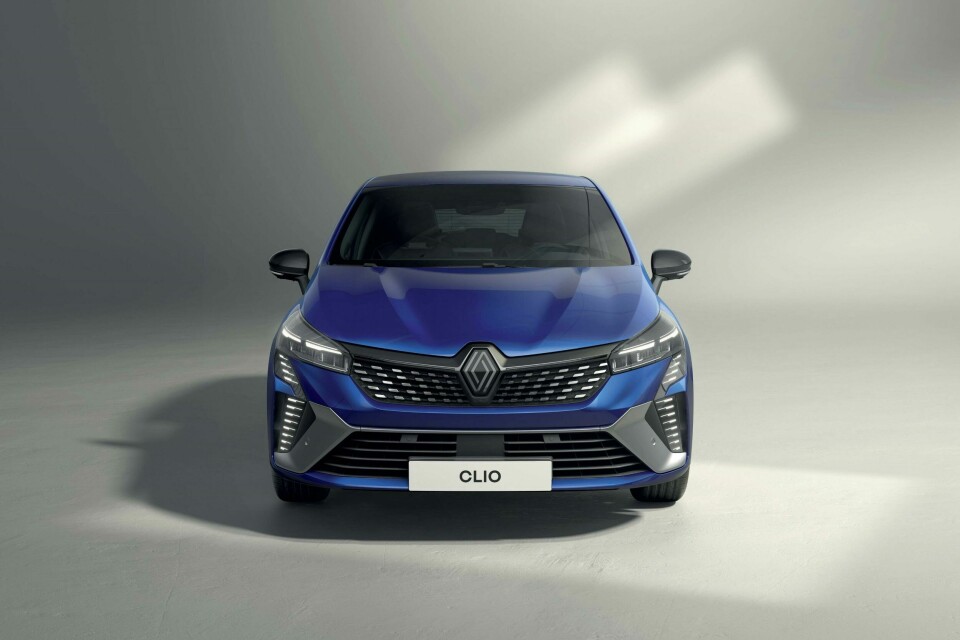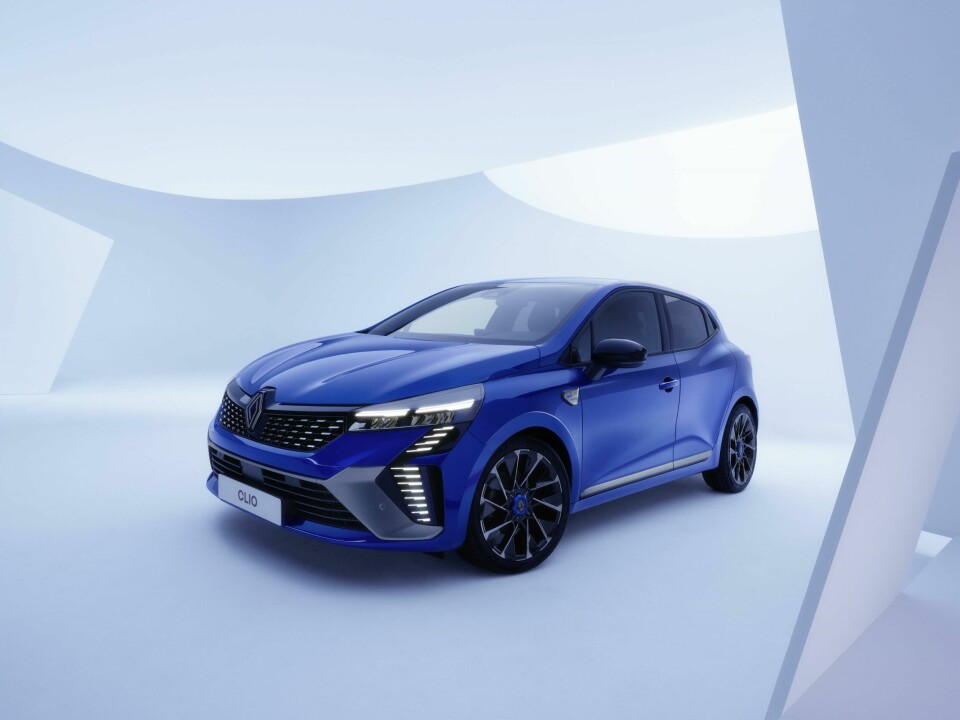
New Renault Clio E-Tech – small, sporty and simplified
Laurens van den Acker takes Michael Nash on a walkaround of the new Clio E-Tech, explaining how important the car will be for the Renault brand
At a small, boutique event space in the heart of Shoreditch, London, Renault invited journalists to the unveiling of its latest Clio while similar events went ahead in Paris, Madrid and Berlin. Now in its fifth generation, this latest Clio marks an important step for Renault in a segment that has seen other players up and leave.
Simple and sustainable
With the wraps off and positioned under bright studio lights, the new Clio casts a strong and assertive shape. The headline, in terms of design changes, is the redesigned front end.
The checkered grille has tripled in size, spreading out from under the new logo to meet the lights, which are no longer C-shaped with the lower edges cutting into the bodywork. Instead, the more simplistic main lamps include dual-blade daytime running lights that sit above five headlight beams, two more than on the previous generation model. LED ladders outline the width of the car, running in front of the wheels and meeting the chunky airfoil blade. It’s a cleaner and tidier lighting signature, and one that Renault says will be used across the brand.
Another more subtle change to the front is the colour gradient on the paint. It is darker at the centre of the bonnet, but includes some brighter streaks near the logo and above the lamps. Similarly, the blade beneath the lower air intake has a brighter lip and darker inner ledges. This detail aims to create a sense of depth and technicality to the design, and certainly implies that the design team were carefully considering different ways to add life to the car.

Nothing new along the sides, but there are some small changes at the rear. Two air outlets have been placed behind the rear wheels to enhance aerodynamics while also helping to visually enlarge the rear end. The rear lights are the same shape, but they are now housed in clear cases – a decision that Renault hopes will show customers more of the technology inside the vehicle.
The layout of the interior appears to remain the same as the previous Clio, but the latest generation gets new upholstery on the seats, door panels and dash. This fabric includes a bio-based cellulosic fibre that comes from natural wood, sourced in semi-natural forests across Europe.
It is an exciting and challenging project
There is also no leather inside, as other surfaces are clad in TEP – a grain-coated fabric made from polyester fibres that requires less water and energy during the dye process when compared to conventional methods. The general idea is to ensure the interior of the Clio is more eco-friendly, with Renault eying its sustainability goals and the aim of reducing its material carbon footprint by 30% before 2030.
Sporty and technical
“The body and shape of the Clio is contemporary and sporty,” Laurens van den Acker, executive vice president of design at the Renault Group, tells Car Design News, gesturing with his hands to emphasise the shapeas he walks us around the car. “With the changes we have made, we have given the car a new personality. It has almost gone to a retreat, detoxed, and come back healthier and stronger.”
He points to the new front end, suggesting that the face of the car has completely changed when compared to the previous generation, so much so that many of the dealerships who saw the new Clio before its official unveiling were convinced it was a brand new model.
“I think the front end is very handsome, and I like the positioning of the car,” he continues. “We pushed the sportiness with the esprit Alpine variant. And I think it is very important that what you see on the tin is what is inside. Some of the biggest disappointments happen when companies promise something with the exterior and the car does not deliver. With the new Clio, it looks like a sporty car, and when you drive it you will feel that too.”
Another important consideration when designing the model was to ensure that its technicality is celebrated. Acker refers to the lighting here as a key element. “For a very long time in design, the idea was to hide technology with design. But the trouble is that there is so much technology in these cars now, and if we want to monetise it, we need to show it off. So when we use tail light lenses that are clear, we show off the technology inside, and our customers need to see and understand the sophistication of the elements.”

The Clio is the first model that includes spatterings of Renault’s new design language – ‘New Wave’. Looking ahead, Acker reveals that, although certain elements like the lighting signature will be used on other models, there will also be clear differentiators to ensure each model is unique and has a strong character.
“We will not simply copy and paste,” he says. ”We are determined to allow every model to have its own personality while also keeping a consistency across the brand. It is an exciting and challenging prospect.”































